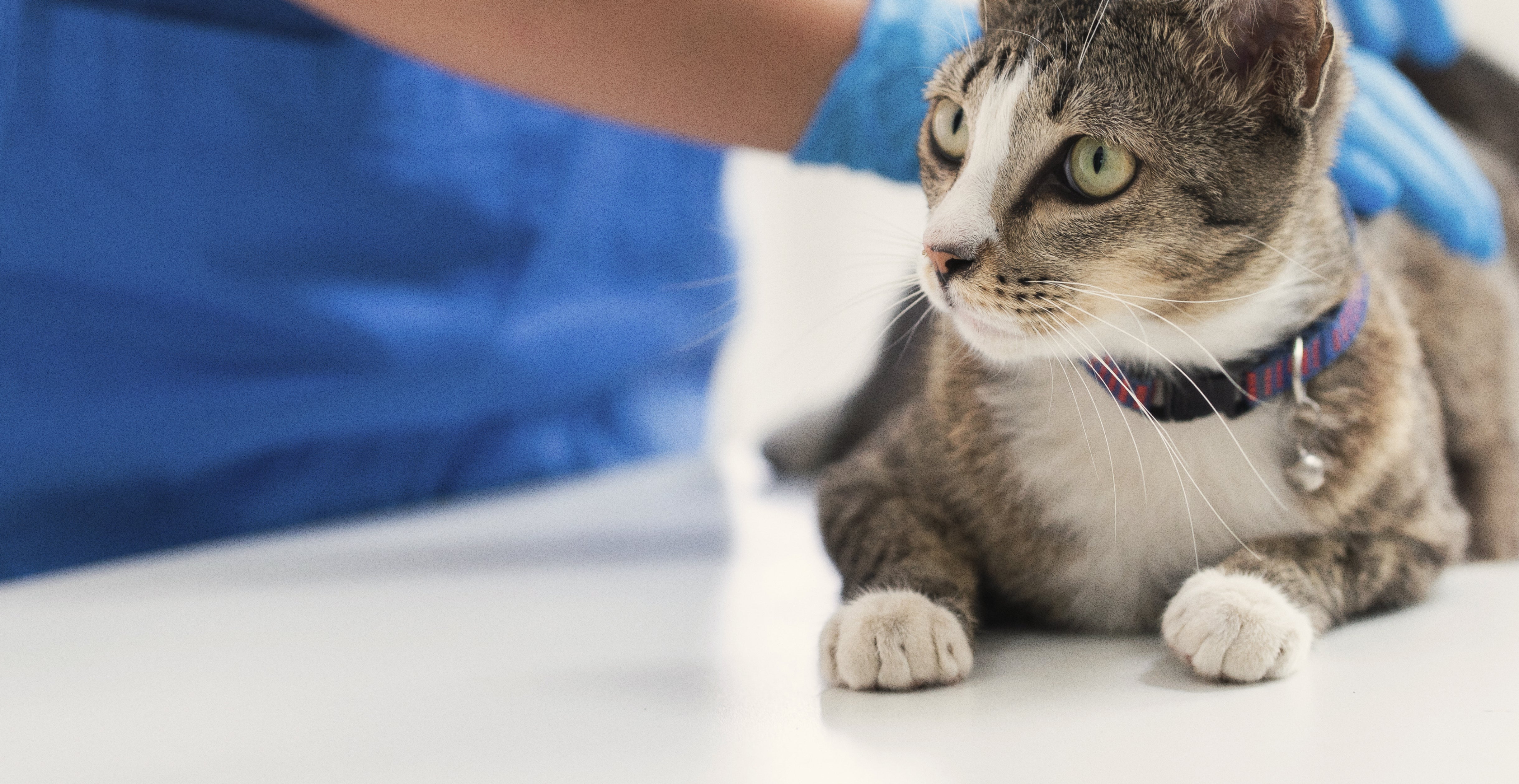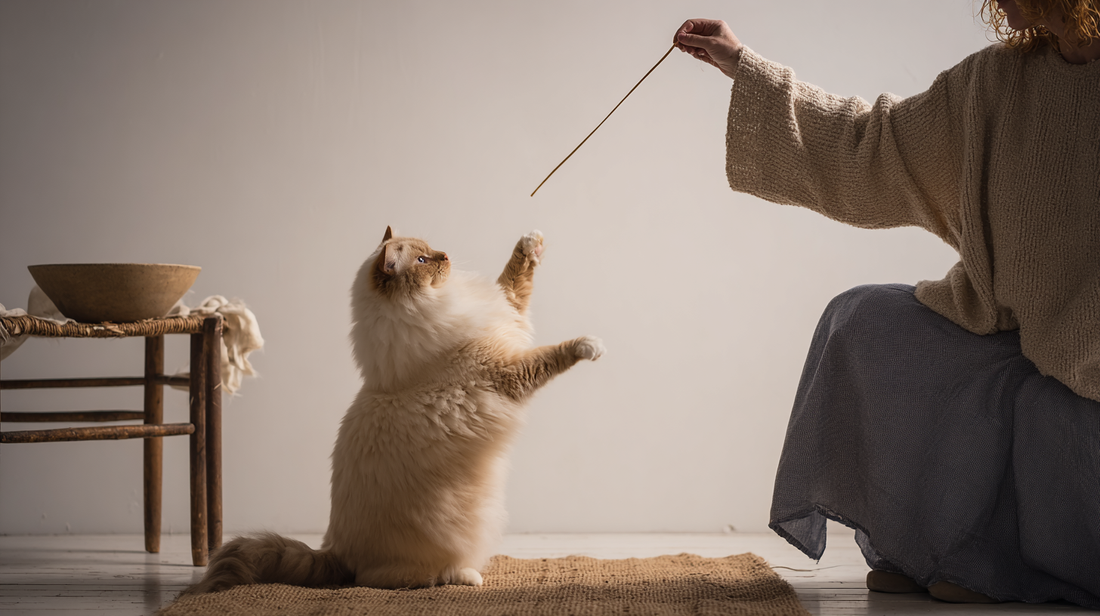Stress significantly impacts your cat's health and behavior, yet many pet owners miss the subtle warning signs. Cats, despite their seemingly calm and independent demeanor, are highly susceptible to stress that affects both their physical wellbeing and emotional state. This stress doesn't just affect their emotional well-being—it can lead to various health issues and behavioral problems that impact their quality of life. In this guide, we'll explore how you can recognize stress in your feline companion, identify common stressors, and implement effective measures to create a calming environment that will improve your cat's overall happiness and health.
Summary
How to recognize stress in your cat
Identifying stress in your cat requires careful observation of changes in both behavior and physical condition. By remaining vigilant and understanding these warning signs, you can intervene early and prevent potentially serious long-term issues.
Behavioral warning signs
Stress manifests in your cat through numerous behavioral changes that you might notice in your day-to-day interactions. A stressed cat may suddenly begin hiding more frequently than usual, seeking isolation as a coping mechanism when feeling overwhelmed. You might also notice increased vocalization, with your typically quiet cat engaging in excessive meowing or yowling as a sign of distress.
Changes in grooming habits are another common indicator, with some cats compulsively over-grooming to self-soothe while others may neglect grooming entirely. Elimination issues, such as urinating or defecating outside the litter box, often signal stress or discomfort in your cat.
Aggression toward other pets or family members can emerge due to fear and anxiety. A reduced appetite or even complete refusal to eat serves as another significant signal that your cat is experiencing stress.

Physical indicators of stress
Beyond behavioral changes, physical symptoms can reveal your cat's elevated stress levels. Unexplained weight loss is a common and concerning indicator of chronic stress. Your stressed cat may also exhibit what veterinarians call "sickness behavior," which includes vomiting, decreased appetite, and avoidance of the litter box.
A study of shelter cats demonstrated that most felines had low food intake scores during their first week in the shelter, lost weight during the first and second weeks, and developed upper respiratory infections during this same period—suggesting that the shelter environment was insufficient to maintain their health. Remember that unplanned weight loss represents a dramatic indicator of your cat's declining health.
What causes stress in cats
Environmental triggers
Your cat is highly sensitive to their surroundings, with even subtle changes potentially triggering stress. Changes in the home environment—such as moving to a new house, undergoing renovations, or introducing new furniture—can disrupt your cat's sense of security and territorial comfort. Noise, especially loud and unpredictable sounds like construction work or barking dogs, can act as a significant stressor for your pet's sensitive hearing.
The presence of other animals, particularly cats or dogs with whom your pet has conflicts, can create a perpetually tense atmosphere. A lack of hiding places or safe spaces further intensifies stress, as your cat needs secure retreats where they can feel protected when overwhelmed.

Social and relationship factors
Your cat's well-being is also affected by their social interactions, or lack thereof. Conflict with other cats in your household represents a major social stressor, leading to constant tension and anxiety that disrupts your cat's sense of safety. Changes in your routine, such as altered work schedules or travel, can also affect your cat, who thrives on predictability and consistency.
A poor human-cat relationship, characterized by insufficient positive interaction or inconsistent handling, can contribute significantly to your pet's chronic stress.
Veterinary stress
Veterinary visits are a well-documented source of stress for many cats. The waiting room environment, filled with unfamiliar animals and strange smells, can be overwhelming for your pet. Unpleasant handling or procedures during examinations can create negative associations, making future visits even more stressful for your cat.
Shelter-related stressors
For cats in shelters, the environment often presents multiple simultaneous stressors. High population density increases competition and reduces individual space. The use of small cages severely limits movement and natural behaviors. A lack of hiding spaces deprives cats of the ability to retreat and feel secure when anxious.
Research confirms the impact of this stress—one study found that cats with the highest stress scores during their first week in a shelter were 5.6 times more likely to develop URI than cats with the lowest stress scores.
How stress affects your cat's health
Immune system suppression
Stress suppresses your cat's immune function, making them more vulnerable to infections. Upper respiratory infections (URI) are particularly common in stressed cats, especially in shelter environments.
Research highlights this connection—one study found that cats with the highest stress scores during their first week in a shelter were 5.6 times more likely to develop URI than cats with the lowest stress scores.

Urinary tract problems
Stress is strongly linked to feline interstitial cystitis (FIC), a chronic pain syndrome affecting your cat's lower urinary tract. Cats with FIC often exhibit distressing symptoms such as frequent urination, painful urination, and blood in the urine. A study found that short-term environmental stressors led to a significant increase in sickness behaviors in both healthy cats and cats with FIC.
Digestive disturbances
Changes in behavior
Stress commonly manifests in various behavioral problems that affect your relationship with your cat. These include elimination problems, such as spraying or urinating outside the litter box, and aggression towards other animals or family members—behaviors that signal your cat's emotional distress.
Creating a stress-free environment for your cat
Creating a low-stress environment involves implementing practical strategies to minimize stressors and promote a sense of safety and security for your feline companion.
Enriching your cat's space
Provide hiding places: cats need safe spaces where they can retreat when feeling stressed or threatened. This can be as simple as a cardboard box, a cat tunnel, or a covered bed where your pet can escape when feeling overwhelmed.
Offer scratching posts: scratching is a natural behavior that helps your cat relieve stress and maintain their claws. Providing multiple scratching posts in different locations throughout your home encourages this healthy stress-relieving behavior.
Ensure access to windows: cats enjoy watching the outside world, which provides essential mental stimulation and reduces boredom that can contribute to stress-related behaviors.
Use pheromone diffusers: synthetic feline facial pheromones, such as Feliway, can help create a calming environment by mimicking the natural scent markers that make your cat feel secure in their territory.

Reducing multi-cat tension
Introduce new pets gradually: when bringing a new pet into your home, use olfactory and visual habituation techniques to allow your cats to adjust to each other's presence gradually without feeling threatened.
Ensure adequate resources: provide multiple food bowls, water stations, litter boxes, and scratching posts throughout your home to prevent competition among cats in the household and reduce territorial disputes.
Making vet visits less stressful
Create positive associations: use treats and toys during vet visits to help your cat associate the clinic with positive experiences rather than fear or discomfort.
Happy visits: take your cat for "happy visits" to the clinic where they receive treats and socialization without any examinations or procedures to build positive associations.
Use calming aids: pheromone sprays or pre-visit medication may help reduce your cat's anxiety during necessary veterinary care.
Considerate handling: veterinary staff should use low-stress handling techniques to minimize fear and discomfort. Veterinary personnel should be trained in desensitization/counterconditioning techniques and use it whenever possible to make the experience less stressful for your cat.
Your role in managing cat stress
Convey positive emotions: as a cat owner, remain calm and confident during potentially stressful situations, as your cat can sense your anxiety and may become more stressed in response.
Provide familiar items: bring a favorite blanket or toy to the vet or when traveling to provide comfort and security through familiar scents and objects.

Advanced techniques for stress reduction
Behavior modification approaches
Training for confidence
Natural supplements and therapies
Alpha-casozepine: Alpha-casozepine may reduce anxiety in your cat through its calming properties that mimic natural compounds found in milk.
L-Tryptophan: L-Tryptophan is an essential amino acid that serves as a precursor to serotonin, a neurotransmitter associated with mood regulation and relaxation. Supplementing your cat’s diet with L-Tryptophan may help reduce stress-related behaviors and promote a sense of calm, especially in anxious or easily agitated cats.
L-Theanine: L-Theanine, an amino acid found in green tea, is known for its ability to promote relaxation without causing drowsiness. It works by increasing levels of calming brain chemicals like serotonin and dopamine. This supplement can be particularly beneficial for cats that experience stress due to environmental changes, loud noises, or travel.
Conclusion
Steps you can take today
Monitor your cat's behavior for signs of stress, such as hiding, changes in grooming, or elimination issues, and take these warning signs seriously.
Identify and minimize stressors in their environment, including noise, social conflict, and lack of safe spaces where they can retreat when feeling threatened.
Work with your veterinarian to develop a comprehensive stress-reduction plan that may include environmental modifications, behavioral therapy, and medication tailored to your cat's specific needs.
A happy, low-stress cat is a healthier and more joyful companion. By understanding the signs of stress and taking proactive steps to create a calming environment, you can significantly improve your cat's quality of life and strengthen the special bond you share with your feline friend.
The information in this article is based on the following scientific publications:
Amat, M., Camps, T., García-Morato, C., & Manteca Vilanova, X. (2016). Stress in owned cats: behavioural changes and welfare implications. Journal of Feline Medicine and Surgery, 18(8), 577–586.
Behnke, A.C., Vitale, K.R., & Udell, M.A.R. (2021). The effect of owner presence and scent on stress resilience in cats. Applied Animal Behaviour Science, 243, 105444.
Stella, J., Croney, C., & Buffington, T. (2013). Effects of stressors on the behavior and physiology of domestic cats. Applied Animal Behaviour Science, 143(2-4), 157–163.
Tanaka, A., Wagner, D.C., Kass, P.H., & Hurley, K.F. (2012). Associations among weight loss, stress, and upper respiratory tract infection in shelter cats. Journal of the American Veterinary Medical Association, 240(5), 570–576.
Riemer, S., et al. (2021). A Review on Mitigating Fear and Aggression in Dogs and Cats. Animals, 11, 158.
Looking for a solution? Start here
Stylla Calmness for cats
Supports relaxation and emotional balance with amino acid-based formulation
- Promotes emotional balance and relaxation
- Helps maintain balanced behaviour
- Supports healthy physiological equilibrium
Made in Switzerland with strict quality standards





